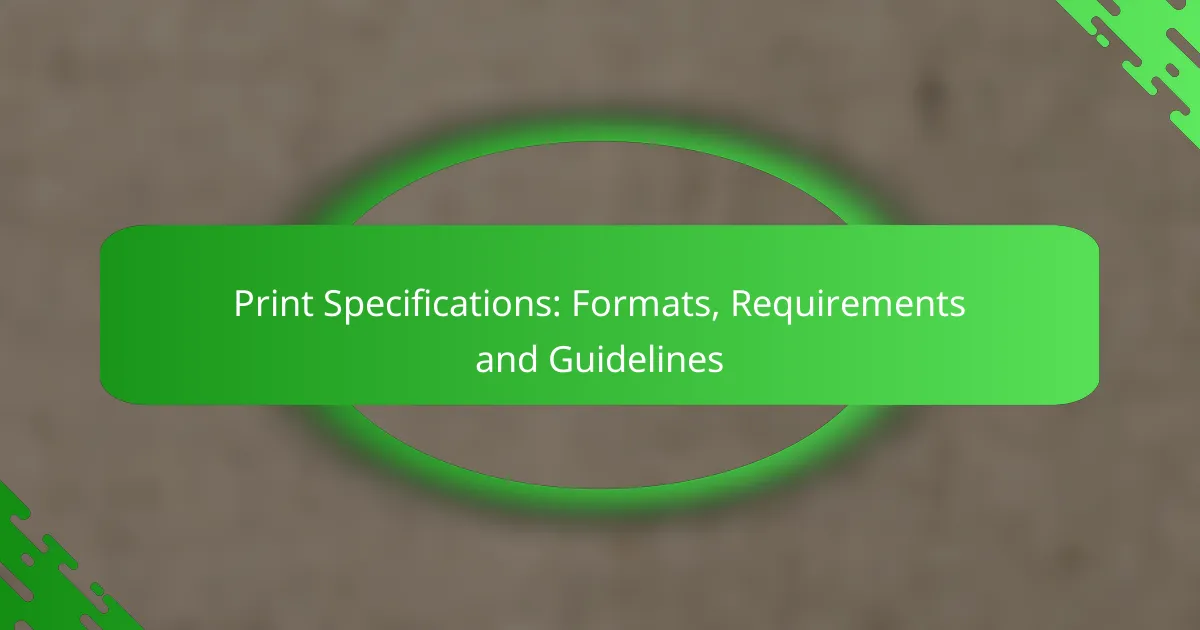Business cards serve as a vital tool for conveying your identity and brand, making a strong impression in professional settings. By focusing on simplicity and alignment with your brand’s visual identity, you can create a card that stands out. The choice of materials, ranging from standard cardstock to eco-friendly options, also plays a crucial role in reinforcing your brand’s values and aesthetics.

How to design effective business cards?
Effective business cards are designed to clearly communicate your identity and brand while leaving a lasting impression. Focus on simplicity, readability, and alignment with your brand’s visual identity to ensure your card stands out in a professional context.
Minimalist design approach
A minimalist design approach emphasizes simplicity and clarity, reducing clutter to highlight essential information. Use a limited color palette and straightforward layouts to create a clean look that draws attention to your name and contact details.
Consider using ample white space to separate elements, allowing the card to breathe and making it easier for recipients to absorb the information. This approach can enhance memorability and professionalism.
Use of bold typography
Bold typography can significantly enhance the visibility of your business card. Choose a font that reflects your brand’s personality while ensuring it is legible at various sizes. A strong typeface can convey confidence and authority.
Limit the number of different fonts to maintain cohesion; typically, one or two complementary fonts work best. Use bold styles for your name or key details to draw attention without overwhelming the design.
Incorporating brand colors
Incorporating brand colors into your business card design reinforces your brand identity. Use your primary brand colors for backgrounds or key elements, ensuring they align with your overall branding strategy.
Be mindful of color psychology; different colors evoke different emotions. For example, blue often conveys trust, while red can signify energy. Choose colors that resonate with your target audience and reflect your brand values.
Utilizing white space
Utilizing white space effectively is crucial for a balanced business card design. White space helps to prevent overcrowding and allows important information to stand out. It guides the viewer’s eye and enhances overall readability.
When designing, aim for a good balance between text and empty space. A well-spaced card feels more professional and is easier for recipients to navigate, making it more likely they will remember you.
Including essential contact information
Including essential contact information is vital for ensuring that potential clients can reach you easily. At a minimum, include your name, job title, phone number, email address, and company website.
Consider adding social media handles if they are relevant to your business. However, avoid overcrowding the card with too much information; prioritize the most important details to maintain clarity and focus.

What materials are best for business cards?
The best materials for business cards depend on your branding goals and target audience. Common choices include standard cardstock, eco-friendly options, plastic, and metal, each offering distinct advantages and aesthetics.
Standard cardstock options
Standard cardstock is the most widely used material for business cards, typically ranging from 250 to 400 gsm (grams per square meter). This thickness provides a sturdy feel while remaining cost-effective. Glossy or matte finishes can enhance the visual appeal, making colors pop or providing a sophisticated look.
When selecting cardstock, consider the weight and finish that align with your brand image. For example, a heavier cardstock may convey professionalism, while a lighter option can suggest modernity and approachability.
Eco-friendly paper choices
Eco-friendly paper options are increasingly popular among businesses looking to promote sustainability. These materials are often made from recycled paper or sourced from responsibly managed forests. They can be just as durable and visually appealing as standard cardstock.
When choosing eco-friendly options, look for certifications like FSC (Forest Stewardship Council) or recycled content labels. This not only supports environmental initiatives but also resonates with eco-conscious clients.
Plastic business cards
Plastic business cards offer a unique and durable alternative to traditional paper cards. Made from PVC or other synthetic materials, they are waterproof and resistant to wear and tear. This makes them ideal for professionals in industries like real estate or hospitality, where cards may be frequently handled.
While plastic cards can be more expensive than paper options, their longevity and distinctive look can make a lasting impression. Consider using clear or frosted plastic for a modern twist on your branding.
Metal business cards
Metal business cards are a premium choice that exudes luxury and exclusivity. Typically made from stainless steel or aluminum, these cards can be engraved or printed with high-quality designs. They are highly durable and can withstand significant wear, making them a memorable option for high-end clients.
However, metal cards come with a higher price point, often ranging from several dollars to over ten dollars per card, depending on customization. Ensure that the investment aligns with your brand strategy and target market to maximize impact.

How does branding influence business card design?
Branding significantly shapes business card design by ensuring that the card reflects the company’s identity and values. A well-designed card not only communicates essential information but also reinforces brand recognition and professionalism.
Consistency with brand identity
Maintaining consistency with brand identity is crucial for effective business card design. This means using the same fonts, colors, and imagery that are present in other branding materials, such as websites and brochures. Consistency helps create a cohesive image that customers can easily recognize.
For instance, if a brand uses a modern sans-serif font on its website, the business card should feature the same font to strengthen brand association. This uniformity fosters trust and familiarity among clients and prospects.
Logo placement strategies
Strategically placing the logo on a business card can enhance visibility and impact. Common practices include positioning the logo prominently at the top or center of the card, ensuring it is one of the first elements noticed. This placement reinforces brand identity and makes it easy for recipients to remember the brand.
Consider the size of the logo as well; it should be large enough to be recognizable but not overpowering. A good rule of thumb is to allocate about 20-30% of the card’s space to the logo for optimal balance.
Color psychology in branding
Color psychology plays a vital role in business card design by influencing perceptions and emotions. Different colors evoke specific feelings; for example, blue often conveys trust and professionalism, while red can signify energy and passion. Selecting colors that align with the brand’s message can enhance its overall impact.
When designing a business card, consider using a color palette that reflects the brand’s personality. A combination of two to three complementary colors can create an appealing and memorable design. Avoid using too many colors, as this can lead to a chaotic appearance that detracts from the brand’s message.

What are the printing options for business cards?
Business cards can be printed using various methods, each offering unique advantages and considerations. The most common printing options include digital printing, offset printing, and the use of special finishes and coatings to enhance the card’s appearance and durability.
Digital printing advantages
Digital printing is a popular choice for business cards due to its quick turnaround and cost-effectiveness for small runs. This method allows for high-quality prints with vibrant colors and can accommodate variable data, meaning you can customize each card with different information.
One of the key benefits is that there are no setup fees, making it ideal for startups or individuals needing fewer than 100 cards. Additionally, digital printing supports a variety of paper types, including recycled options, appealing to environmentally conscious businesses.
Offset printing benefits
Offset printing is often preferred for larger quantities of business cards, as it produces high-quality images and consistent color across prints. This method involves transferring ink from a plate to a rubber blanket and then onto the card, which allows for precise color matching and fine details.
While offset printing has higher initial setup costs, it becomes more economical as the volume increases, typically becoming cost-effective for orders above 250 cards. This method also offers a wider range of paper stock and finishes, giving businesses more options to create a unique look.
Special finishes and coatings
Applying special finishes and coatings can significantly enhance the visual appeal and tactile experience of business cards. Common options include matte, gloss, and satin finishes, which can change how colors appear and how the card feels in hand.
Coatings like UV or aqueous can provide additional protection against wear and tear, making cards more durable. Considerations for choosing a finish include the overall brand image and the intended use of the cards; for instance, a glossy finish may suit a vibrant, modern brand, while a matte finish might align better with a more traditional or professional image.

How to choose the right size and shape for business cards?
Choosing the right size and shape for business cards is crucial for making a memorable impression. Standard sizes are widely accepted, but custom shapes can enhance uniqueness and brand identity.
Standard dimensions
The most common size for business cards is 3.5 x 2 inches (approximately 89 x 51 mm) in the United States. This size fits easily into wallets and cardholders, making it practical for networking. In Europe, a slightly different standard of 85 x 55 mm is prevalent.
When selecting standard dimensions, consider the layout and design elements. Ensure that text and logos are well-positioned and legible. A good rule of thumb is to leave a margin of about 1/8 inch (3 mm) around the edges to avoid cutting off important information during printing.
Custom shapes for uniqueness
Custom shapes can set your business card apart and reflect your brand’s personality. Options include rounded corners, square cards, or even die-cut designs that mimic your logo or product shape. These unique formats can capture attention but may also increase printing costs.
When opting for custom shapes, consider the practicality of storage and distribution. Non-standard cards may not fit in conventional cardholders, which could limit their usability. Always balance creativity with functionality to ensure your card is both eye-catching and easy to carry.



